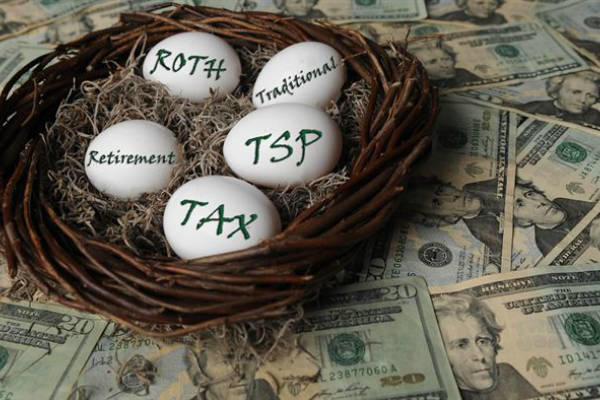If you are thinking about cashing out your Thrift Savings Plan (TSP) when you leave the uniformed service, think twice. Or maybe three times. You might be about to forsake a financially secure retirement.
All servicemembers and their families should be educated to the potentially devastating impact that cashing even a modest amount of TSP assets can have on retirement savings.
When you switch jobs before retirement, you usually can choose among several things to do with your TSP nest egg:
- Leave the money in the plan.
- Roll over the money to your new employer's plan, if the plan accepts transfers.
- Roll over the money into an Individual Retirement Account (IRA).
- Take the cash value of your account.
It may be tempting to choose the last option and use the money to buy a new television, take a cruise or even pay off a debt. And you would not be alone in thinking that way: A recent Hewitt Associates study of large-company retirement savings plans indicates that 45 percent of employees cash out their plans when they change jobs.
But cashing out before you turn age 59 1/2 can cost you dearly, both immediately and in the long run:
- If you do not transfer your money to an IRA or your new employer's plan within 60 days of receiving it, your current employer is required to withhold 20 percent of your account balance to prepay federal taxes.
- If you keep the money, you must pay federal income tax on your entire withdrawal. In addition, you may also owe state tax on your distribution.
- Plus, the IRS will consider your payout an early distribution, meaning you could owe a 10 percent early withdrawal penalty on top of combined federal, state and local taxes.
When all is said and done, you could end up with a little more than half of your original TSP savings! In addition, you will owe tax annually on any future earnings your lump sum generates.
The High Cost Of Cashing Out
The repercussions of cashing out of your TSP could be enormous. For example, let's assume you are 30 years old and have a TSP balance of $20,000. If you leave that money in your TSP account or put it in an IRA, and your account averages a six percent rate of return over the next 32 years, your balance at retirement will total $129,068, even if you do not make any additional contributions during that time.
Even if you have a shorter time horizon, you will forgo significant savings opportunities by cashing out your TSP. For example, if you are 45, your $20,000 would grow to $53,855 in 17 years.
Keep in mind that even if you really need the money, you may be better off borrowing from your TSP account. You may be able to borrow at a lower rate from your account than you could from a bank or other lender, especially if you have a low credit score. You must be in pay status to obtain a loan, because your regular monthly loan payments are made through payroll deductions.
To learn more about TSP loans, click the TSP Features/Uniformed Services button at the TSP website (www.tsp.gov), then go to the TSP Loan Program link.
When you leave military service, carefully examine the short- and long-term consequences before cashing out of your TSP account. After all, when talking about tax-deferred savings plans, time is money.
For additional information on saving for retirement, read "Smart 401(k) Investing" on the NASD Investor Education Foundation's new website for members of the military and their families: SaveAndInvest.org.
Want To Start Saving Through TSP?
The Thrift Savings Plan can provide you with a supplemental source of retirement income in addition to your uniformed services retired pay. Your contributions and earnings are yours to keep, even if you separate from the uniformed services before retirement. If you leave the uniformed services and enter the Federal civilian service, you will be able to continue contributing to the TSP. You can also combine your uniformed services account with your civilian account.
Don't have a lot of extra money? You can contribute as little as one percent of your basic pay each pay period. Even small savings add up over time. If you put in only $40 from your pay each month and it earns seven percent, after 20 years your TSP account could total almost $21,000!
*This article originally appeared on MilitaryMoney.com




